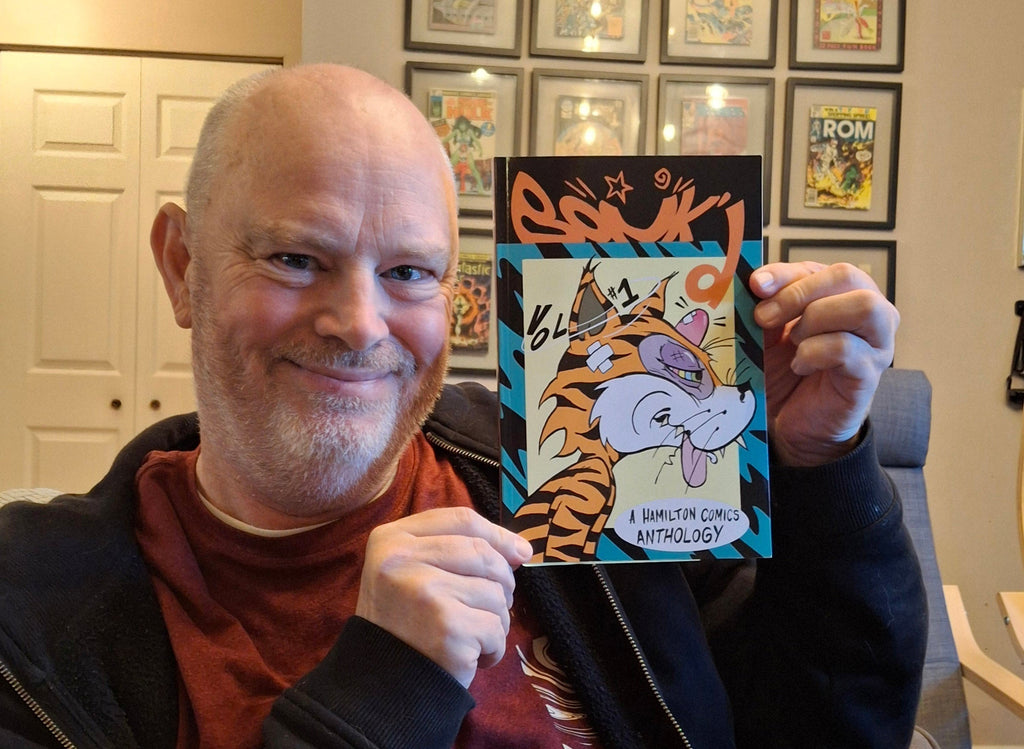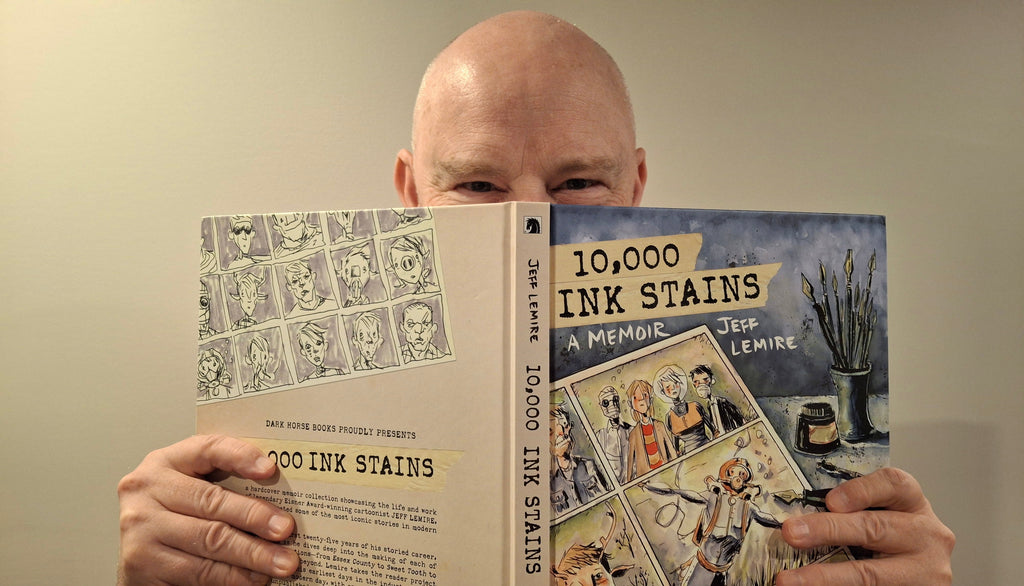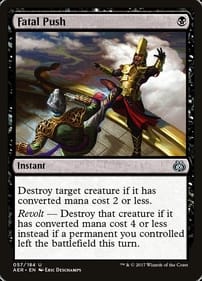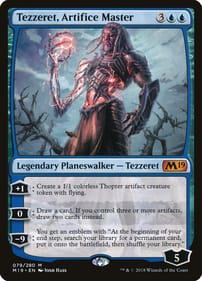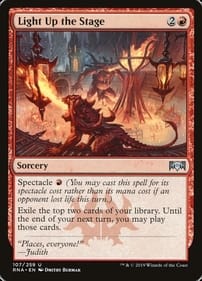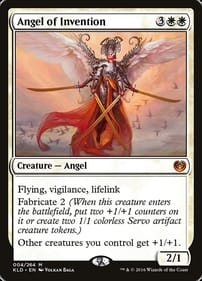Dawn of the Black Axe is Amazing
Dawn of the Black Axe is amazing By Dan Brown David Petersen’s Mouse Guard: Dawn of the Black Axe is a superlative series that will make for a must-read graphic novel come January. The three-issue title debuted and wrapped from March to June this year. The collected version lands on store shelves January 20. Do yourself a favour and pre-order your copy now. Although I initially felt trepidation that another comic creator – Gabriel Rodriguez – handled art duties, instead of Petersen, my skepticism soon melted away when I got a closer look at the individual issues, which are gorgeous. As Mouse Guard fans know, Petersen is the Michigan writer/artist who originated the idea of a medieval mouse society protected by the members of the Guard, forest rangers who serve to keep the far-flung mouse communities safe. Petersen’s art in the main title is amazing, which is what I’m used to. But Rodriguez’s lines are just as expressive, in their own way. There are fantasy/sorcery elements to the story – mostly in the form of a ghostly elk, who guides Bardick, the first-ever bearer of the black axe, in his quest to kill five giant snakes who are tightening their grip on mouse territory by raiding villages and breeding more young. The blade itself was fashioned by the blacksmith Farrer, whose own wife and children were slain by one of the serpents. “I’ll take all the pain forged in this weapon and protect mouse kind,” Bardick vows, perhaps not realizing he will be in the forest for many a season before he can rest. I was able to enjoy Rodriguez’s art on its own terms. He can do action just as well as he can render scenes in which the characters are static. He is also so good at evoking a sense of time – the reader sees Bardick grow weary as his adventures drag on over years. And that mysterious ghost elk is ethereal, except when he’s material, in one panel helping Bardick ford a stream. Each image rewards repeated attention, as the reader absorbs more detail and is drawn deeper into the Mouse Guard world. Nor is it a foregone conclusion that the slithering death threatening mouse communities will be vanquished. Bardick lives to see some of the mice thrive, but Petersen has a twist up his sleeve that will force readers to re-think what they thought they knew about the enemies of the mice, who have a “seething fury . . . boiling in their collective cold hearts.” What I know for sure about Mouse Guard is how Petersen is not interested in telling the same old stories. In a previous adventure, some mice rebelled against the mouse matriarch – but instead of taking the side of the rebels, a tale we’re all familiar with, he told it from the vantage of those trying to keep order. Another way of saying it is, Mouse Guard comics remind me of the spirit of the 2000 film Crouching Tiger, Hidden Dragon, as well as the Lord of the Rings books and the best Star Wars movies/TV shows. I’m already excited for 2026. Dan Brown has covered pop culture for more than 33 years as a journalist and also moderates L.A. Mood’s monthly graphic-novel group.
More Patented Tom Gauld Science Humour
By Dan Brown I’m a fan of Tom Gauld’s work, so I was already inclined to like his latest collection, Physics for Cats: Science Cartoons, which was published in October. It’s as strong as such previous books as his Department of Mind-Blowing Theories, Baking with Kafka, and Mooncop. The cartoons collected in his latest publication originally appeared in New Scientist magazine. They continue his tradition of absurdist humour and once again, he covers the gamut from slapstick comedy to highbrow references (H.P. Lovecraft has been a recurring source of laughs for many years). If the idea of a fun-sized Hadron Collider you can take to the beach strikes you as funny, then Gauld is the cartoonist for you. The closest comparison I can come up with is Gary Larson, who used to do The Far Side. Gauld has the same sort of cock-eyed way of looking at the world. The toons here feature a cast of cat scientists, human scientists, cockroach scientists, alien scientists, medieval scientists, and talking dogs. You don’t have to be a scientist to appreciate them, in fact a number of them revolve around petty office politics – apparently the science community is no different from any other made up of human beings. In fact, Gauld hints that the only thing separating modern scientists from old-school witches is their lab coats. Do real scientists actually take the extra bones from museum exhibits and create super-scary monster skeletons out of them? I don’t know, but Gauld’s men and women of science do. Or imagine a job interview at the Institute for Lifespan Extension Research. Of course the applicant is asked, “Where do you see yourself in 500 years?” There’s a fair bit of play with panels here as Gauld tries to stretch his usual platform of a single rectangular box. One panel in Physics for Cats can be read upside-down, another front to back. Yet another panel is phasing out of existence. And in one cartoon, the framing looks something like a traditional Sunday newspaper strip. In one three-part cartoon, a scientist looks at a floating black disc. “I stared into the abyss,” she begins. “The abyss stared back.” The punchline comes in the third panel: “One thing led to another, and now I meet the abyss for regular chats in the coffee shop near my lab.” Gauld has clearly mastered the cartoon form by now. I would still love to see him experiment more with long-form narratives, as he did with 2016’s Mooncop. That said, if you have an egghead on your Christmas list, or even just someone who’s really well-read, you could do a lot worse than Physics for Cats. Dan Brown has covered pop culture for more than 33 years as a journalist and also moderates L.A. Mood’s monthly graphic-novel group.
New Collection Features Hamilton’s Finest
By Dan Brown Bonk’d Vol. 1 is “your new favourite comics anthology,” according to the blurb on the back cover. It features work from 25 Hamilton-based and -connected cartoonists. The 114-page collection is the brainchild of Hammer comic creators Joe Ollmann, Sunny Singh and Paul Palacios. You may know Ollmann from his many superlative graphic novels, including Fictional Father and The Abominable Mr. Seabrook. In the book’s brief introductory strip, Ollmann explains how the idea behind Bonk’d is to give local creators a showcase where they can “work out shorter ideas.” He also admits such collections don’t have an illustrious history: “Maybe we’ll be like those 80s and 90s anthologies in terms of a one-issue print run.” But based on this volume, Bonk’d should have much more staying power. This is a strong group of stories without any obvious weak spots. There are contributions from old hands like Seth, whose four-panel cartoon haikus – taken from his sketchbook – are a highlight. Then there are names that might be less familiar to readers outside Steeltown, such as James Collier, whose strip Kitty Finds Employment comes closest to capturing the feel of the underground comix of the 1970s. Some of the artists involved tackle the question of Hamilton’s identity in a direct way. Matt MacInnes’s piece LRT Buyouts is a visual record of all the structures “designated to be, or already have been, demolished to build the light rail transportation (LRT) system.” “Hundreds of low-income and working-class people have been displaced in this process,” MacInnes notes. It’s such a simple idea, yet it makes for a powerful statement. That’s in contrast to Kento’s I Need/Like/Thank you HSR, a warm tribute to the city’s public transit. “The bus makes me feel like part of my community,” the single-name artist/writer muses. “Riding the bus feels like riding through the bloodstream of the city. I like being a cell.” MacInnes is also responsible for a two-page spread about the Hamilton Tigers, who have the distinction of being the only NHL team to ever go on strike, a move that cost them the Stanley Cup. Palacios publishes under the name Rulito. His The Stranger in the Bowtie is dedicated to profiling a local oddball, one of those figures that every city or town has who embody the spirit of that community in a gnarly way. (For London, think local legends like Roy McDonald or Bill Paul.) Palacios grapples with Steeltown’s civic identity in What is Hamilton Anyways?, the second panel of which features a hand giving the finger to the CN Tower: “It’s definitely NOT Toronto, despite being close to it.” His conclusion would do the folks in Austin, Texas proud. In Hamilton, he writes, “You can be as weird as you want. And we will love you for that.” Are readers demanding an anthology like Bonk’d? Will it have appeal outside the Hammer’s city limits? Let’s hope so. Whatever happens, Bonk’d Vol. 1 is clear evidence that Hamilton has the talent to turn this project into a going concern rather than just a one-off. Dan Brown has covered pop culture for more than 33 years as a journalist and also moderates L.A. Mood’s monthly graphic-novel group.
Find Inspiration in Lemire Memoir
By Dan Brown If you cried at the climax of Jeff Lemire’s Sweet Tooth series back in 2013, then 10,000 Ink Stains will be a treat for you. Fans of Southwestern Ontario native Lemire will love this newly released memoir, which covers the artist/writer’s first 25 years in the comic industry, from the time he was a kid to his days breaking into the business until now, when he has his own large following. It will be of secondary interest to DC and Marvel readers looking to get a glimpse into behind-the-scenes machinations at those companies from roughly 2010 to 2017. Lemire’s focus here is on the graphic novels and comics he has drawn and written himself. He follows a chronological structure, walking the reader through each stage of his evolution as a comic creator, giving the reader insights into his creative process, and fitting each book or series into the larger context of his career and life. So if you’re a fan of works such as Sweet Tooth, Essex County, the Underwater Welder, Trillium, Secret Path, Black Hammer and Royal City, you should check this one out. You’ll get Lemire’s creative thought process, details about how he achieved the look of each one, and his personal reaction to the public’s reaction. “Comics is such a deeply personal medium,” Lemire writes, meaning he doesn’t want to speak for any other creator. He also freely admits his scratchy drawing style is not everyone’s cup of tea – he made peace with that reality long ago. He also freely shares credit for his success with the people who helped him along the way, like how Chris Staros at Top Shelf was the one who took Lemire under his wing and coached him on storytelling during the making of Essex County, the book which garnered Lemire so much attention at the outset of his career. What may come as a surprise is when Lemire reveals how badly he suffered from anxiety and depression earlier in his life, which – until he found a medication that worked for him – he treated with drinking and chain-smoking. “I am a fairly private person,” he explains. The great part is how Lemire is an example of the school of thought that says no experience is wasted. Again and again, he shows how his failures led directly to his greatest successes as a cartoonist. Lemire has never really discarded an idea – if it doesn’t work for his current projects, he’ll file it away in the back of his mind, where it has a good chance of becoming the germ of his next book or comic series. His story is inspiring for that reason. What you won’t find here is a lot of gossip about the Big Two comic giants, DC and Marvel. But Lemire does talk about how he learned more about himself, his preferences, and his process by taking on assignments from the Coke and Pepsi of the comic industry. Ultimately, Lemire concludes that working on company-owned characters isn’t his favourite thing. He had to settle for having his own “weird little pocket of the DC Universe for a couple of years.” (One of the points that does come through is, if you thought DC’s New 52 marketing blitz was a chaotic mess when it launched, it was the same behind the scenes.) His eventual answer was to create the Black Hammer comic universe, a playground of his own making where he can scratch virtually any creative itch. Lemire doesn’t write extensively on his secret to being prolific, by taking the work ethic he learned growing up on the family farm in Woodslee, east of Windsor, and applying it to comics – to the point some consider him the modern equivalent of Jack Kirby. He also glosses over the book A.D. After Death, his 2017 collaboration with Scott Snyder, which I thought was an interesting omission. At the conclusion of 10,000 Ink Stains Lemire urges readers, if they like reading comics, to try making one of their own. We can only hope there is a young person out there with a creative spark who takes his advice seriously, because the world would be better for it. Dan Brown has covered pop culture for more than 32 years as a journalist and also moderates L.A. Mood’s monthly graphic-novel group.




